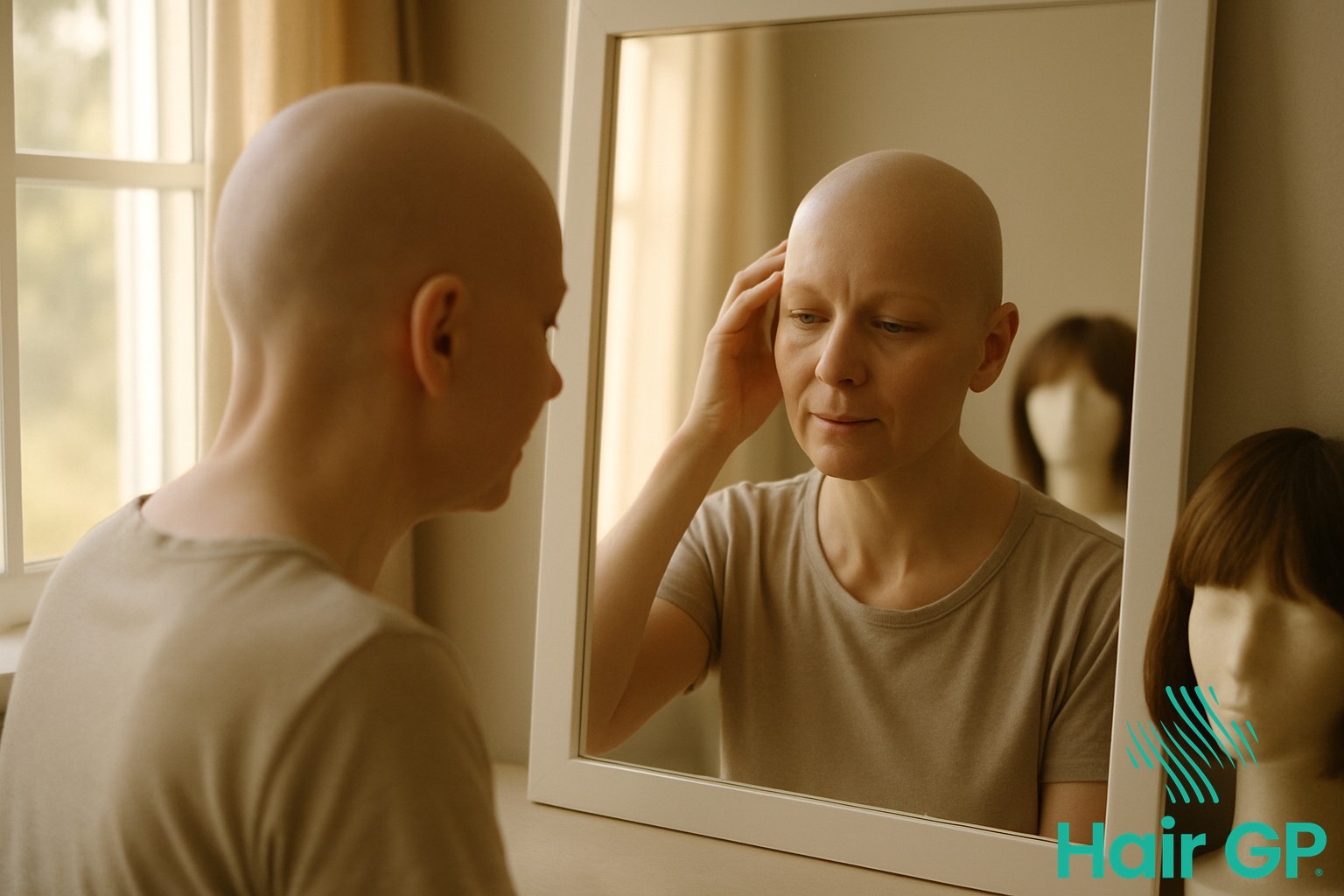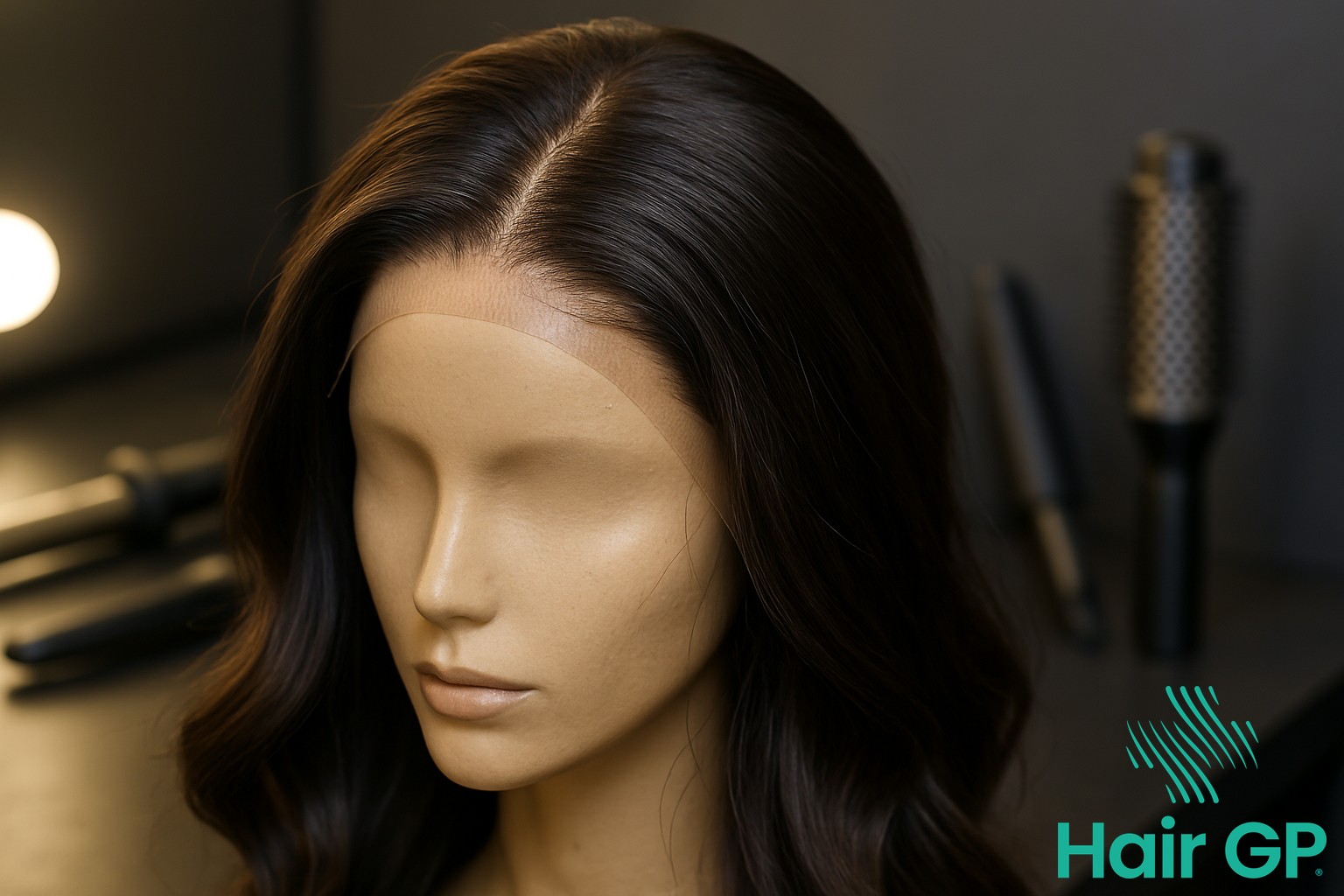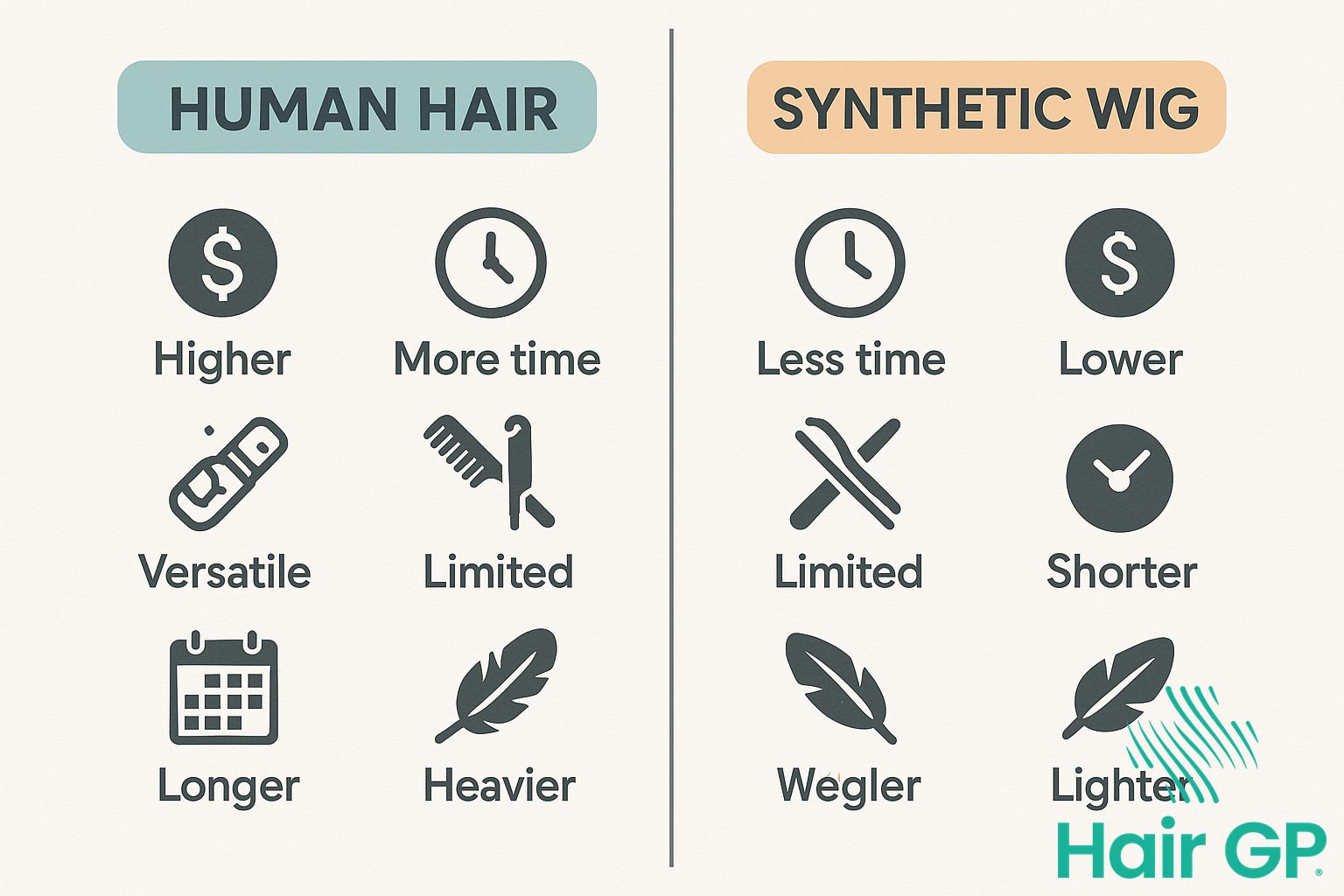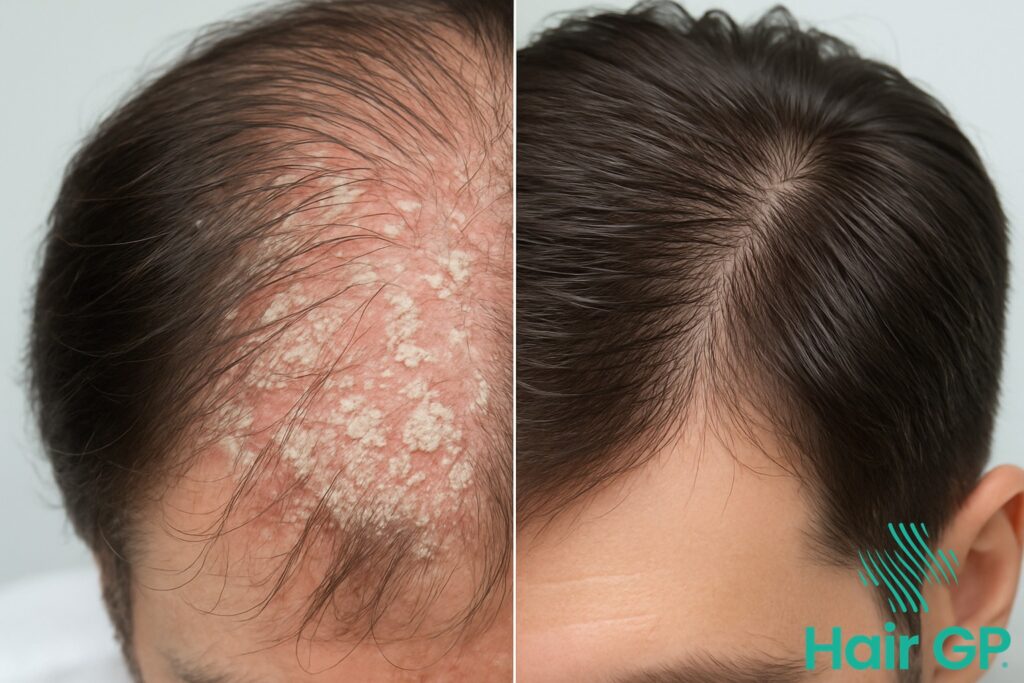Introduction
Facing hair loss during chemotherapy can be one of the most emotionally challenging aspects of cancer treatment. For many patients, losing their hair represents a visible reminder of their illness, making the decision to wear a wig an important step in maintaining confidence and a sense of normalcy. Choosing the right wig involves more than simply selecting a style – it requires understanding the fundamental differences between human hair wigs and synthetic wigs, and determining which option best suits your unique needs during treatment.
This comprehensive guide will walk you through everything you need to know about selecting, wearing, and caring for your wig throughout your chemotherapy journey. We’ll begin by exploring how treatment affects your hair follicles and the typical timeline for hair loss, helping you prepare emotionally and practically for this change. You’ll discover the distinct advantages of human hair options, including their natural appearance and styling versatility, as well as the benefits of modern synthetic alternatives that offer convenience and affordability.
We’ll provide detailed comparisons to help you weigh factors like cost, maintenance requirements, and comfort – particularly important considerations when dealing with treatment-related fatigue and scalp sensitivity. Additionally, you’ll learn about essential accessories and fitting techniques that ensure your wig looks natural and stays secure throughout your daily activities. Finally, we’ll share practical care tips tailored specifically for chemotherapy patients, ensuring your chosen wig remains beautiful and comfortable throughout your treatment journey.
Key Takeaways – TL/DR
- Human hair wigs offer the most natural look and styling versatility but require more maintenance and cost significantly more
- Synthetic wigs are budget-friendly, low-maintenance, and hold their style but have limited heat styling options
- Consider factors like your lifestyle, budget, and sensitivity level when choosing between wig types
- Both options can provide excellent results when properly fitted and cared for during chemotherapy
- Many patients benefit from having both types to suit different occasions and comfort needs
Understanding Hair Loss During Chemotherapy
Chemotherapy-induced alopecia occurs when powerful cancer treatment medications target rapidly dividing cells throughout the body, including the hair follicles. This process typically begins within two to four weeks after starting chemotherapy, with most patients experiencing noticeable hair loss by their second treatment cycle[1]. The extent of alopecia varies depending on the specific drugs used, dosage, and individual patient factors, but studies indicate that approximately 65% of chemo patients experience significant hair loss during their treatment[2].
The psychological impact of losing one’s hair during cancer treatment extends far beyond cosmetic concerns. For many individuals undergoing chemotherapy, hair loss represents a visible marker of their illness, potentially affecting self-esteem, body image, and social interactions. This dramatic change can trigger feelings of vulnerability and loss of control at an already challenging time. Understanding this emotional dimension helps explain why selecting an appropriate wig becomes more than a practical decision – it’s an essential step in maintaining psychological wellbeing and personal identity throughout the treatment journey. Whether patients choose human hair or synthetic options, the right wig can provide a crucial sense of normalcy and confidence during chemotherapy.

Human Hair Wigs: Natural Beauty and Versatility
Human hair wigs offer chemotherapy patients the most natural-looking solution for hair replacement, providing unparalleled versatility in styling and appearance. These high quality wigs, crafted from real human hair, allow wearers to maintain their personal style whilst navigating treatment, offering both aesthetic and psychological benefits during a challenging time.
Benefits of Real Hair Wigs
The most significant advantage of human hair wigs lies in their incredibly realistic appearance and natural movement. Unlike synthetic alternatives, real human hair responds to environmental conditions just like natural hair, creating authentic-looking volume and flow. The versatility of human hair wigs extends to styling options – they can be cut, coloured, and heat-styled using straighteners or curling irons, allowing patients to change their look as desired. Lace front and full lace constructions provide an exceptionally natural hairline, making the wig virtually undetectable. These premium constructions allow for multiple styling options, including updos and ponytails, giving wearers complete freedom in their appearance. With proper care, human hair wigs typically last between one to three years, making them a worthwhile investment for those undergoing extended treatment periods.
Maintenance Requirements
Whilst human hair wigs offer superior realism, they require dedicated maintenance to preserve their quality. Regular washing and conditioning with specialised products is essential, typically every 7-10 wears depending on lifestyle and environment. Professional styling services can help maintain the wig’s shape and appearance, particularly after washing. Proper storage on a wig stand helps preserve the style and prevents tangling. Daily brushing with appropriate tools and occasional deep conditioning treatments keep the hair soft and manageable. Unlike synthetic options, human hair wigs may require restyling after washing, but this also allows for complete customisation of the look to suit individual preferences and occasions.

Synthetic Wigs: Convenience and Affordability
Synthetic wigs have revolutionised hair replacement options for chemotherapy patients, offering sophisticated styling and practical benefits that make daily life easier during treatment. Modern synthetic hair wigs combine advanced fibre technology with thoughtful design features, providing comfortable, natural-looking alternatives that require minimal maintenance whilst maintaining their beautiful appearance.
Advanced Synthetic Materials
Today’s synthetic fibres represent a significant advancement from earlier materials, offering remarkable realism and versatility. Heat-friendly synthetic options now allow limited styling with low-temperature tools, giving patients the flexibility to personalise their wig style whilst maintaining the convenience of pre-styled hair. These innovative memory fibres retain their original style even after washing, eliminating the need for daily restyling that can be exhausting during treatment. Additionally, synthetic wigs are considerably lighter weight than human hair alternatives, reducing pressure on sensitive scalps. Many feature monofilament wigs construction, creating the illusion of natural hair growth whilst providing superior comfort and breathability for chemotherapy-affected skin.
Easy Care Benefits
The wash-and-wear convenience of synthetic wigs makes them particularly appealing for patients managing treatment fatigue. Unlike human hair options, synthetic fibres maintain their style memory after washing, simply returning to their original shape as they dry. This eliminates the need for blow-drying, curling, or straightening – tasks that can feel overwhelming during chemotherapy. Minimal daily styling is needed beyond gentle brushing with appropriate tools. Lightweight wigs crafted from synthetic materials can be quickly refreshed with specialised products, maintaining their lustre without time-consuming routines. This practical advantage allows patients to look polished with minimal effort, preserving energy for healing whilst maintaining confidence in their appearance throughout their treatment journey.

Comparing Real Hair vs Synthetic: Making Your Decision
When choosing between different wig types, understanding the unique advantages and challenges of each option helps chemotherapy patients make informed decisions. Real hair wigs offer unparalleled natural movement and styling flexibility, allowing users to heat-style, colour, and treat the hair much like their own. However, this versatility comes with higher maintenance requirements and significantly greater costs, often ranging from £500 to £3,000 depending on quality and construction.
Synthetic wigs have evolved dramatically, with modern fibres closely mimicking natural hair texture whilst offering practical benefits for those undergoing treatment. These wig types maintain their style regardless of weather conditions and require minimal daily maintenance – crucial for chemotherapy patients experiencing fatigue. The pre-styled nature means less energy expenditure on daily grooming, and costs typically range from £50 to £500, making them more accessible.
For those with a sensitive scalp during treatment, cap construction becomes equally important as fibre type. Both real hair and synthetic options offer lightweight, breathable caps with soft linings designed specifically for medical hair loss. The perfect wig ultimately depends on individual lifestyle, budget, and treatment schedule rather than fibre type alone.
Consider your energy levels throughout treatment when making this decision. Real hair requires regular washing, conditioning, and styling, whilst synthetic options need only gentle brushing and occasional washing. Many chemotherapy patients find that starting with a quality synthetic wig and potentially investing in human hair once they understand their needs and preferences works well, allowing them to adapt their choice as circumstances change.

Essential Wig Accessories and Fitting Tips
Achieving a comfortable and secure fit begins with selecting the right foundation. A soft wig cap underneath your full wig creates a smooth base whilst protecting sensitive scalps during treatment. Cotton or bamboo caps offer breathability and comfort, particularly important for those experiencing chemotherapy-related sensitivity. For added security, silicone-lined caps provide gentle grip without causing irritation.
Securing your wig properly ensures confidence throughout daily activities. Adjustable straps inside the hairpiece allow for customisation, whilst wig grips or adhesive strips offer additional security without damaging delicate skin. Hand tied wigs typically feature lighter construction, making them ideal for extended wear. Small bobby pins matching your wig colour can be strategically placed for extra hold during windy conditions or physical activities.
Essential accessories enhance both comfort and appearance. Wig stands maintain shape between wears, whilst specialised brushes prevent damage to fibres. Silk pillowcases reduce friction during sleep, helping preserve styling. For achieving a natural look, consider using concealer along the hairline or dry shampoo to reduce shine on synthetic pieces. Remember that proper fitting means the wig sits comfortably without excessive tightness—you should be able to fit two fingers between the wig cap and your head for optimal comfort.

Caring for Your Wig During Treatment
Proper wig maintenance during chemotherapy requires a gentle approach that conserves your energy whilst extending your wig’s lifespan. Simple maintenance tips can help you look your best without exhausting yourself. For synthetic wigs, use a specialised wig brush with wide-spaced bristles to gently detangle, starting from the ends and working upward. Avoid using regular brushes designed for natural hair, as these can damage synthetic fibres and cause frizzing.
Human hair wigs and hair toppers need slightly more attention but remain manageable with simplified routines. Whilst these pieces can tolerate heat styling tools like straighteners, consider embracing their natural texture during treatment to minimise daily effort. When your own hair begins regrowing, continue using gentle products suitable for both your recovering scalp and wig materials.
Store your wig on a proper stand overnight to maintain its shape and allow air circulation. Schedule professional cleaning every 4-6 weeks rather than attempting complex maintenance yourself. This approach preserves your wig’s quality whilst respecting your energy levels during treatment.
Conclusion
Selecting the right wig during chemo treatment is deeply personal, influenced by your individual lifestyle, financial considerations, and comfort preferences. Both human hair and synthetic options offer distinct advantages that can help restore confidence throughout your cancer journey. The key is finding what works best for your unique circumstances and daily routine.
Many specialised wig retailers understand the sensitive nature of hair loss during treatment and provide exceptional support services. These include private consultation rooms, experienced staff trained in oncology hair care, and flexible appointment scheduling around treatment cycles. Some retailers even offer home visits for patients unable to travel comfortably.
Whether you prefer the styling versatility of human hair wigs, allowing multiple hairstyles and heat styling options, or the low-maintenance convenience of synthetic alternatives that hold their shape effortlessly, both can deliver beautiful, natural-looking results. Consider factors like your desired hair colour options, budget constraints, and available time for maintenance when making your decision.
Remember, your chosen wig is temporary – as your hair grows back after treatment, you’ll transition back to your natural locks. Until then, the perfect wig can help you maintain your sense of self and confidence during this challenging time.
Frequently Asked Questions
Yes, many wigs are designed specifically for sensitive scalps. Look for lightweight options with soft cap constructions like hand-tied or monofilament caps. Using a bamboo or cotton wig cap underneath can provide extra comfort and protection.
With proper care, human hair wigs typically last 1-3 years, while synthetic wigs generally last 4-6 months with regular wear. However, many patients find having both types beneficial during treatment.
Yes, but precautions are needed. Synthetic wigs handle moisture better than human hair. Use wig tape or a wig grip for security during exercise. For swimming, consider a designated synthetic wig as chlorine can damage both wig types.
Many insurance plans cover ‘cranial prostheses’ for medical hair loss. Check with your provider and ask your oncologist for a prescription using this specific terminology to improve coverage chances. Information on NHS funded wigs can be found here.
It’s best to begin shopping before significant hair loss occurs, typically within the first 2-3 weeks of treatment. This allows you to match your natural hair color and style more easily and reduces stress later.
References
- Rossi A, Fortuna MC, Caro G, et al. Chemotherapy-induced alopecia management: Clinical experience and practical advice. J Cosmet Dermatol. 2019;18(5):1228-1236.
- Dunnill CJ, Al-Tameemi W, Collett A, et al. A Clinical and Biological Guide for Understanding Chemotherapy-Induced Alopecia and Its Prevention. Oncologist. 2018;23(1):84-96.









